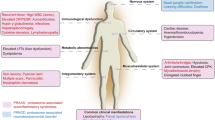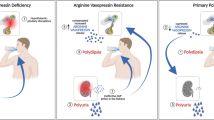Abstract
Cystinuria is an autosomal recessive disease that causes l-cystine precipitation in urine and nephrolithiasis. Disease severity is highly variable; it is known, however, that cystinuria has a more severe course in males. The aim of this study was to compare l-cystine metastability in first-morning urine collected from 24 normal female and 24 normal male subjects. Samples were buffered at pH 5 and loaded with l-cystine (0.4 and 4 mM final concentration) to calculate the amount remaining in solution after overnight incubation at 4 °C; results were expressed as Z scores reflecting the l-cystine solubility in each sample. In addition, metabolomic analyses were performed to identify candidate compounds that influence l-cystine solubility. l-cystine solubility Z score was +0.44 ± 1.1 and −0.44 ± 0.70 in female and male samples, respectively (p < 0.001). Further analyses showed that the l-cystine solubility was independent from urine concentration but was significantly associated with low urinary excretion of inosine (p = 0.010), vanillylmandelic acid (VMA) (p = 0.015), adenosine (p = 0.029), and guanosine (p = 0.032). In vitro l-cystine precipitation assays confirmed that these molecules induce higher rates of l-cystine precipitation in comparison with their corresponding dideoxy molecules, used as controls. In silico computational and modeling analyses confirmed higher binding energy of these compounds. These data indicate that urinary excretion of nucleosides and VMA may represent important factors that modulate l-cystine solubility and may represent new targets for therapy in cystinuria.






Similar content being viewed by others
References
Alexander RT, Hemmelgarn BR, Wiebe N, Bello A, Morgan C, Samuel S, Klarenbach SW, Curhan GC, Tonelli M, Alberta Kidney Disease Network (2012) Kidney stones and kidney function loss: a cohort study. BMJ 345:e5287
Anbuchezhiyan M, Ponnusamy S, Muthamizhchelvan C (2010) Crystal growth and characterizations of l-cystine dihydrobromide: a semiorganic nonlinear optical material. Phys B Condens Matter 405:1119–1124
Apruzzese F, Bottari E, Festa MR (2002) Protonation equilibria and solubility of l-cystine. Talanta 56:459–469
Borghi L, Schianchi T, Meschi T, Guerra A, Allegri F, Maggiore U, Novarini A (2002) Comparison of two diets for the prevention of recurrent stones in idiopathic hypercalciuria. N Engl J Med 346:77–84
Calonge MJ, Nadal M, Calvano S, Testar X, Zelante L, Zorzano A, Estivill X, Gasparini P, Palacin M, Nunes V (1995) Assignment of the gene responsible for cystinuria (rBAT) and of markers D2S119 and D2S177 to 2p16 by fluorescence in situ hybridization. Hum Genet 95:633–636
Chaney MO, Steinrauf LK (1974) The crystal and molecular structure of tetragonal \sc l-cystine. Acta Crystallogr Sect B 30:711–716
Chow GK, Streem SB (1998) Contemporary urological intervention for cystinuric patients: immediate and long-term impact and implications. J Urol 160:341–344 (discussion 344–355)
Cirillo M, Stellato D, Panarelli P, Laurenzi M, De Santo NG, Gubbio Study Research Group (2003) Cross-sectional and prospective data on urinary calcium and urinary stone disease. Kidney Int 63:2200–2206
Coe FL, Clark C, Parks JH, Asplin JR (2001) Solid phase assay of urine cystine supersaturation in the presence of cystine binding drugs. J Urol 166:688–693
Coe FL, Evan A, Worcester E (2005) Kidney stone disease. J Clin Invest 115:2598–2608
Dahaoui S, Pichon-Pesme V, Howard JAK, Lecomte C (1999) CCD Charge density study on crystals with large unit cell parameters: the case of hexagonal l-cystine. J Phys Chem A 103:6240–6250
Dello Strologo L, Pras E, Pontesilli C, Beccia E, Ricci-Barbini V, de Sanctis L, Ponzone A, Gallucci M, Bisceglia L, Zelante L et al (2002) Comparison between SLC3A1 and SLC7A9 cystinuria patients and carriers: a need for a new classification. J Am Soc Nephrol 13:2547–2553
Dello Strologo L, Laurenzi C, Legato A, Pastore A (2007) Cystinuria in children and young adults: success of monitoring free-cystine urine levels. Pediatr Nephrol 22:1869–1873
Dolin DJ, Asplin JR, Flagel L, Grasso M, Goldfarb DS (2005) Effect of cystine-binding thiol drugs on urinary cystine capacity in patients with cystinuria. J Endourol 19:429–432
Ewing TJ, Makino S, Skillman AG, Kuntz ID (2001) DOCK 4.0: search strategies for automated molecular docking of flexible molecule databases. J Comput Aided Mol Des 15:411–428
Feliubadalo L, Font M, Purroy J, Rousaud F, Estivill X, Nunes V, Golomb E, Centola M, Aksentijevich I, Kreiss Y et al (1999) Non-type I cystinuria caused by mutations in SLC7A9, encoding a subunit (bo,+AT) of rBAT. Nat Genet 23:52–57
Fernandez E, Torrents D, Chillaron J, Martin Del Rio R, Zorzano A, Palacin M (2003) Basolateral LAT-2 has a major role in the transepithelial flux of l-cystine in the renal proximal tubule cell line OK. J Am Soc Nephrol 14:837–847
Fujiki Y, Tokunaga N, Shinkai S, Sada K (2006) Anisotropic decoration of gold nanoparticles onto specific crystal faces of organic single crystals. Angew Chem Int Ed Engl 45:4764–4767
Girija EK, Kalkura SN, Ramasamy P (1995) Crystallization of cystine. J Mater Sci Mater Med 6:617–619
Goldfarb DS, Coe FL, Asplin JR (2006) Urinary cystine excretion and capacity in patients with cystinuria. Kidney Int 69:1041–1047
Goodyer P (2004) The molecular basis of cystinuria. Nephron Exp Nephrol 98:e45–e49
Heldman DA, Grever MR, Speicher CE, Trewyn RW (1983) Urinary excretion of modified nucleosides in chronic myelogenous leukemia. J Lab Clin Med 101:783–792
Lang PT, Brozell SR, Mukherjee S, Pettersen EF, Meng EC, Thomas V, Rizzo RC, Case DA, James TL, Kuntz ID (2009) DOCK 6: combining techniques to model RNA-small molecule complexes. RNA 15:1219–1230
Moe OW (2006) Kidney stones: pathophysiology and medical management. Lancet 367:333–344
Moggach SA, Allan DR, Parsons S, Sawyer L, Warren JE (2005) The effect of pressure on the crystal structure of hexagonal l-cystine. J Synchrotron Radiat 12:598–607
Nakagawa Y, Asplin JR, Goldfarb DS, Parks JH, Coe FL (2000) Clinical use of cystine supersaturation measurements. J Urol 164:1481–1485
Oughton BM, Harrison PM (1959) The crystal structure of hexagonal \sc l-cystine. Acta Crystallogr 12:396–404
Palacin M, Goodyer P, Nunes V, Gasparini P (1995) The metabolic and molecular bases of inherited disease. McGraw-Hill, Health Professions Division, New York, London
Parvex P, Rozen R, Dziarmaga A, Goodyer P (2003) Studies of urinary cystine precipitation in vitro: ontogeny of cystine nephrolithiasis and identification of meso-2,3-dimercaptosuccinic acid as a potential therapy for cystinuria. Mol Genet Metab 80:419–425
Pearle MS, Calhoun EA, Curhan GC, Urologic Diseases of America Project (2005) Urologic diseases in America project: urolithiasis. J Urol 173:848–857
Pietrow P, Auge BK, Weizer AZ, Delvecchio FC, Silverstein AD, Mathias B, Albala DM, Preminger GM (2003) Durability of the medical management of cystinuria. J Urol 169:68–70
Pitt JJ, Eggington M, Kahler SG (2002) Comprehensive screening of urine samples for inborn errors of metabolism by electrospray tandem mass spectrometry. Clin Chem 48:1970–1980
Rashidi M, Pashaei-Asl R (2012) Role of aldehyde oxidase and xanthine oxidase in the metabolism of purine-related drugs, readings in advanced pharmacokinetics—theory, methods and applications. http://www.intechopen.com/books/readings-in-advanced-pharmacokinetics-theory-methods-and-applications/role-of-aldehyde-oxidase-and-xanthine-oxidase-in-the-metabolism-of-purine-related-drugs. InTech; ;http://www.intechopen.com/books/readings-in-advanced-pharmacokinetics-theory-methods-and-applications/role-of-aldehyde-oxidase-and-xanthine-oxidase-in-the-metabolism-of-purine-related-drugs
Richards FM (1977) Areas, volumes, packing and protein structure. Annu Rev Biophys Bioeng 6:151–176
Rimer JD, An Z, Zhu Z, Lee MH, Goldfarb DS, Wesson JA, Ward MD (2010) Crystal growth inhibitors for the prevention of l-cystine kidney stones through molecular design. Science 330:337–341
Rodman JS, Blackburn P, Williams JJ, Brown A, Pospischil MA, Peterson CM (1984) The effect of dietary protein on cystine excretion in patients with cystinuria. Clin Nephrol 22:273–278
Romero V, Akpinar H, Assimos DG (2010) Kidney stones: a global picture of prevalence, incidence, and associated risk factors. Rev Urol 12:e86–e96
Schram KH (1998) Urinary nucleosides. Mass Spectrom Rev 17:131–251
Sheng X, Jung T, Wesson JA, Ward MD (2005) Adhesion at calcium oxalate crystal surfaces and the effect of urinary constituents. Proc Natl Acad Sci USA 102:267–272
Stamatelou KK, Francis ME, Jones CA, Nyberg LM, Curhan GC (2003) Time trends in reported prevalence of kidney stones in the United States: 1976–1994. Kidney Int 63:1817–1823
Struck W, Siluk D, Yumba-Mpanga A, Markuszewski M, Kaliszan R, Markuszewski MJ (2013) Liquid chromatography tandem mass spectrometry study of urinary nucleosides as potential cancer markers. J Chromatogr A 1283:122–131
Szymanska E, Markuszewski MJ, Markuszewski M, Kaliszan R (2010) Altered levels of nucleoside metabolite profiles in urogenital tract cancer measured by capillary electrophoresis. J Pharm Biomed Anal 53:1305–1312
Wilmer MJ, Willems PH, Verkaart S, Visch HJ, de Graaf-Hess A, Blom HJ, Monnens LA, van den Heuvel LP, Levtchenko EN (2007) Cystine dimethylester model of cystinosis: still reliable? Pediatr Res 62:151–155
Yasui T, Iguchi M, Suzuki S, Kohri K (2008) Prevalence and epidemiological characteristics of urolithiasis in Japan: national trends between 1965 and 2005. Urology 71:209–213
Zhang XX, Rozen R, Hediger MA, Goodyer P, Eydoux P (1994) Assignment of the gene for cystinuria (SLC3A1) to human chromosome 2p21 by fluorescence in situ hybridization. Genomics 24:413–414
Conflict of interest
The authors declare that they have no conflict of interest.
Author information
Authors and Affiliations
Corresponding author
Additional information
A. Masotti and C. Laurenzi have equally contributed.
Rights and permissions
About this article
Cite this article
Masotti, A., Laurenzi, C., Boenzi, S. et al. Gender-related effects on urine l-cystine metastability. Amino Acids 46, 415–427 (2014). https://doi.org/10.1007/s00726-013-1631-9
Received:
Accepted:
Published:
Issue Date:
DOI: https://doi.org/10.1007/s00726-013-1631-9




